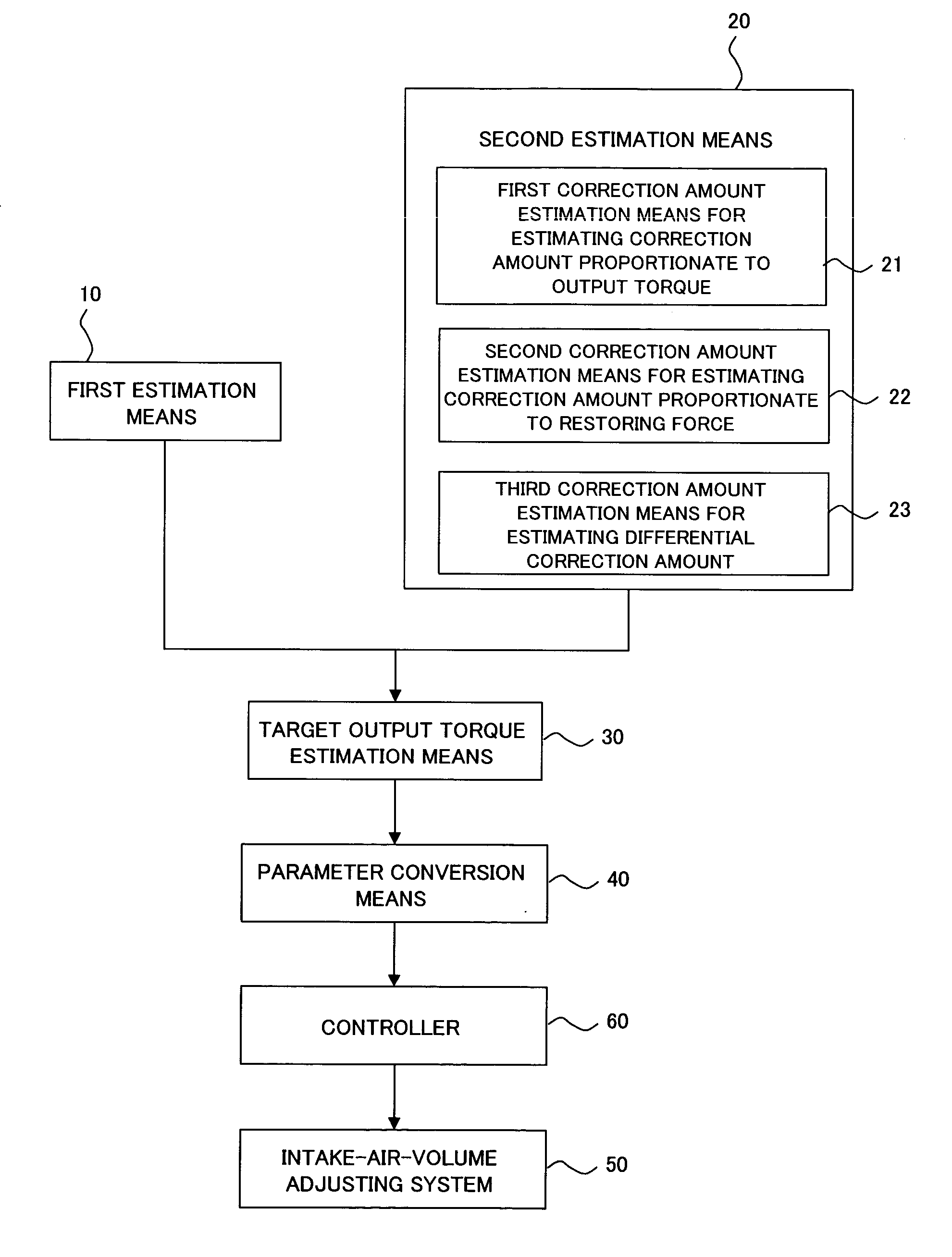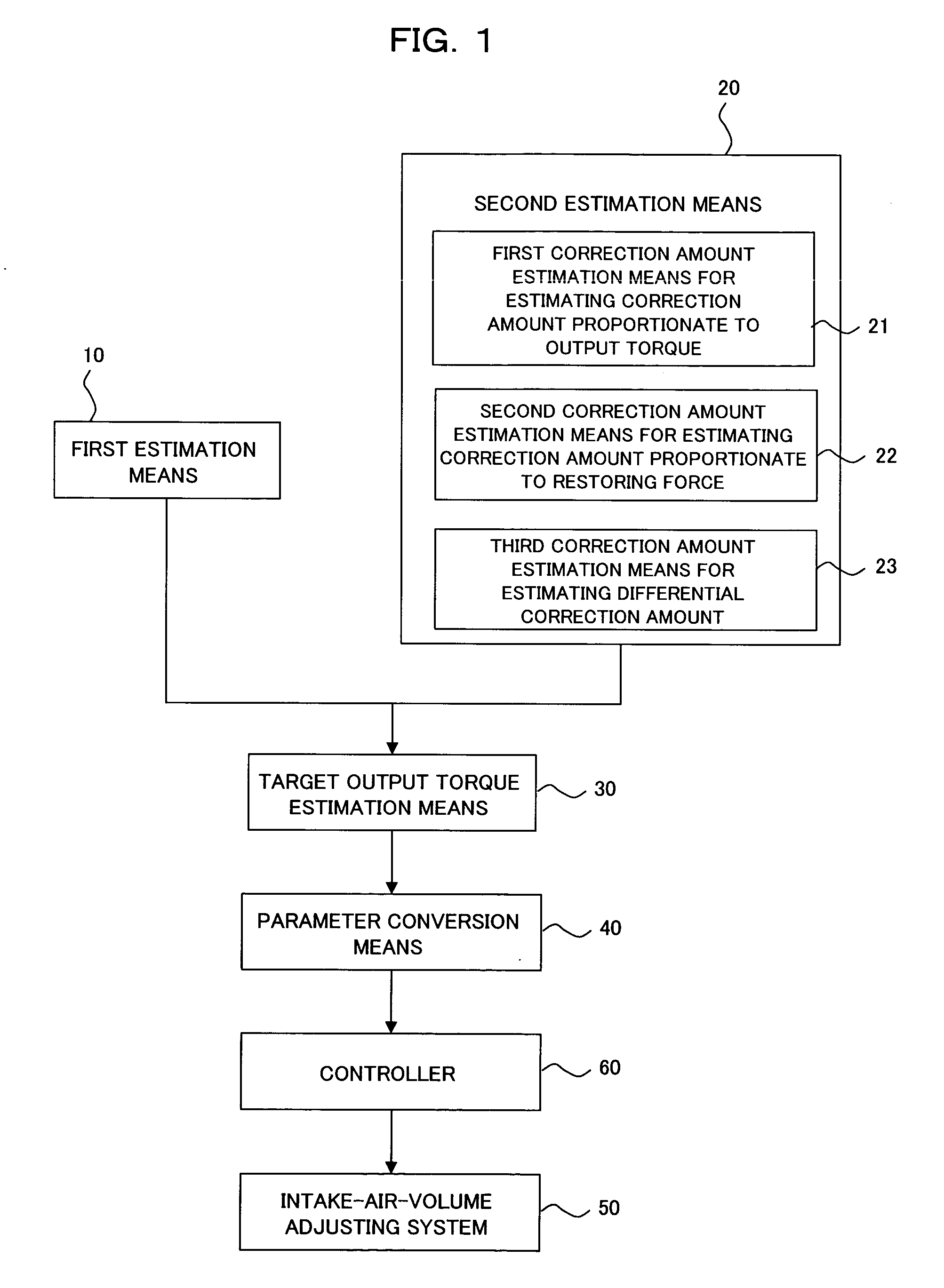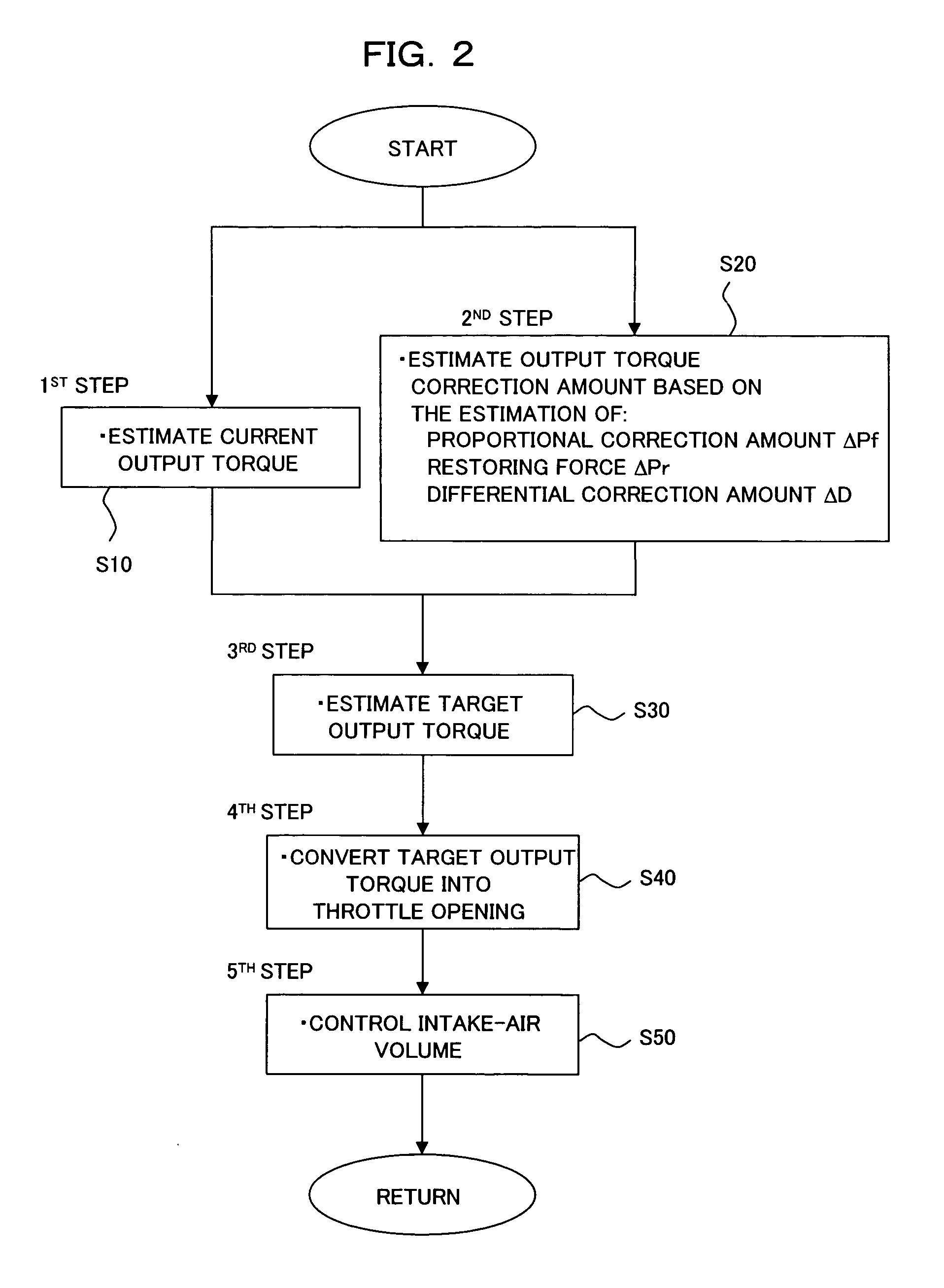Device and method for controlling air volume during idle operation
a technology of air volume control and idle operation, which is applied in the direction of electric control, speed sensing governors, instruments, etc., can solve the problems of difficulty in obtaining optimal values for individual gains kp, kd and ki, and difficulty in adequately affecting the effect of gain change-over or gain map replacemen
- Summary
- Abstract
- Description
- Claims
- Application Information
AI Technical Summary
Benefits of technology
Problems solved by technology
Method used
Image
Examples
first embodiment
[First Embodiment]
Firstly, a description will be made about the device and method according to the first embodiment of the present invention for controlling an air volume during an idle operation. FIGS. 1 and 2 show the control device and method according to the first embodiment of the present invention, and FIG. 1 is an overall construction diagram of the control device while FIG. 2 is a flow chart of the control method.
As shown in FIG. 1, the control device according to this embodiment is constructed of first estimation means 10 for estimating a current output corresponding to a present intake-air volume (which may hereinafter be simply called an “air volume”) of an internal combustion engine idle-operated on the basis of a target engine speed (target rpm); second estimation means 20 for estimating an output torque correction amount (correction value) corresponding to a difference between a current engine speed and the target engine speed; target output torque estimation means ...
second embodiment
[Second Embodiment]
A description will next be made about the device and method according to the second embodiment of the present invention for controlling an air volume during an idle operation.
The control device according to this embodiment is similar to the above-described first embodiment except that, even when the engine speed changes, a restoring force ΔPr to be estimated at the second correction amount estimation means 22 in the second estimation means 20 is not produced immediately but is estimated as an actual restoring force ΔPr involving a response delay. Descriptions of the elements of construction and their functions, which are common to both of the embodiments, are omitted accordingly.
Referring now to FIG. 1 of the above-described first embodiment, a description will be made about the control device according to the second embodiment. In this embodiment, those elements of the control device which are the same as or equivalent to corresponding elements in the above-...
third embodiment
[Third Embodiment]
Next, a description will be made about the device and method according to the third embodiment of the present invention for controlling an air volume during an idle operation. FIGS. 3 and 4 show the control device and method according to the third embodiment of the present invention, and FIG. 3 is an overall construction diagram of the control device while FIG. 4 is a flow chart of the control method.
In the control device according to this embodiment, a current output torque is used at the below-described first estimation means 100 upon estimating a throttle opening as an output torque correlation value equivalent to the current output torque. This current output torque is similar to the output torque Y(n) estimated at the first estimation means 10 in the first embodiment. Further, a proportional correction amount ΔPf, restoring force ΔPr and differential correction amount ΔD are used as output torque correction amounts at the below-described second estimation m...
PUM
 Login to View More
Login to View More Abstract
Description
Claims
Application Information
 Login to View More
Login to View More - R&D
- Intellectual Property
- Life Sciences
- Materials
- Tech Scout
- Unparalleled Data Quality
- Higher Quality Content
- 60% Fewer Hallucinations
Browse by: Latest US Patents, China's latest patents, Technical Efficacy Thesaurus, Application Domain, Technology Topic, Popular Technical Reports.
© 2025 PatSnap. All rights reserved.Legal|Privacy policy|Modern Slavery Act Transparency Statement|Sitemap|About US| Contact US: help@patsnap.com



